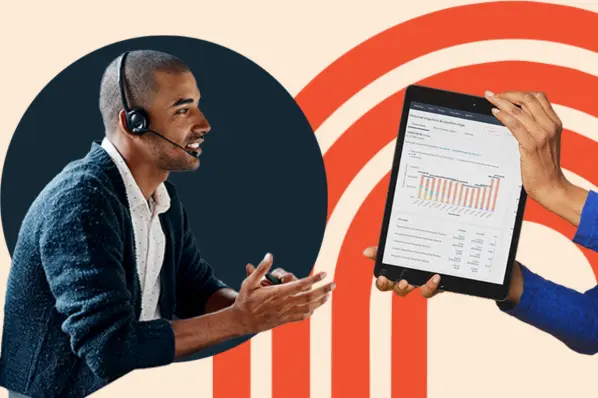Table of Contents
- What is financial forecasting?
- Financial Forecasting Models
- Financial Forecasting Methods
- How I Do Financial Forecasting
- Financial Forecasting Software
What is financial forecasting?
Financial forecasting is a process where a business leverages its current and past financial information to project its future financial performance. Forecasts are typically applied to assist with budgeting, financial modeling, and other key financial planning activities.
Financial forecasting is often conflated with the other key financial planning processes it generally informs — namely, budgeting. Though the two activities are often closely linked, I think it is important to clearly differentiate between them.
Forecasting vs. Budgeting
The difference between a financial forecast and a budget boils down to the distinction between expectations and goals. I like to remember forecast details as something a business can realistically expect to achieve over a given period.
Forecasting represents a reasonable estimate of how a company will likely perform — based on current and historical financial data, broader economic trends, foreseeable factors that might impact performance, and other variables that can be viably accounted for.
How to Create Accurate Sales Forecasts in 2024
A budget, on the other hand, is the byproduct of a financial analysis rooted in what a business would like to achieve. It’s typically updated once per year and is ultimately compared to the actual results a business sees to gauge the company’s overall performance.
Now that I have given you an overview of the topic, let’s take a look at some of the most popular financial forecasting models.
Financial Forecasting Models
1. Top-Down Financial Forecasting
Top-down forecasting is a way for a company to make financial predictions by starting with broader market information and working down to estimate its own revenue.
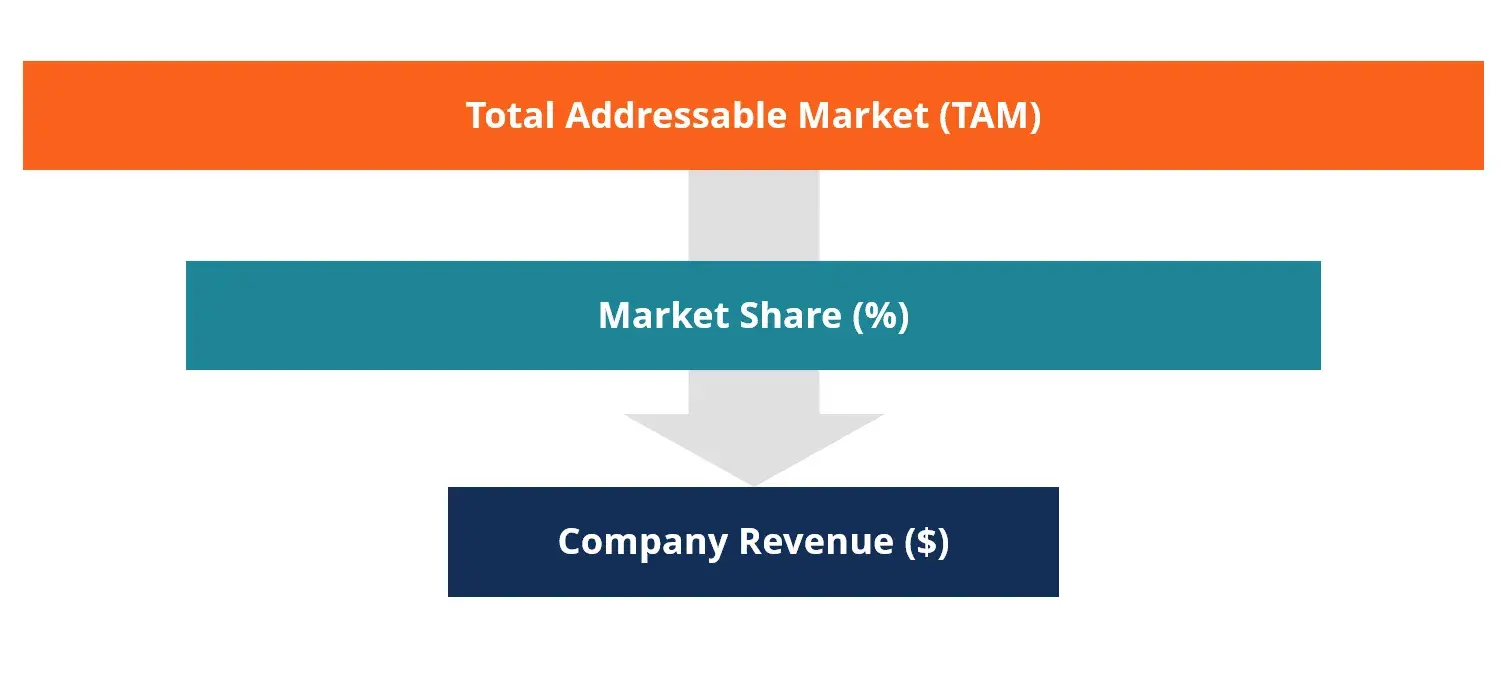
I like how simply Erik Lidman, CEO & Founder at Aimplan, explains top-down forecasts. In his LinkedIn post, he writes that top-down forecasts:
- Are made by leadership and finance teams.
- Tend to be more aspirational and aggressive.
- Start with the end goal in mind, then reason down to forecast key business drivers like pricing, customers, promotion impact, etc.
I think this approach is pretty simple. The company begins by looking at the total amount of money its entire market makes. Then, it calculates how much of that total it thinks it can earn. The calculation is often done with the help of tools such as fp&a software, which allows you to collect all the data you need.
Top-Down Financial Forecasting Example
Imagine a company that is part of a market that makes about $1 billion each year. If the company believes it can capture 2.5% of that market, a top-down forecast would predict it could make $25 million in the next year.
Benefits of Top-Down Forecasting
- Offers a streamlined approach for larger, established businesses with diverse revenue sources rather than a concentrated, product-level forecast.
- Viable forecasting avenue for early-stage companies without extensive financial data.
Drawbacks of Top-Down Forecasting
- Hastier and more superficial in comparison to other, more granular forecasting methods.
- Seen more as a starting point than a concrete projection.
- Does not account for local factors that can influence demand.
2. Delphi Forecasting
The “Delphi” method is named after an ancient Greek city called Delphi, where people would go to ask a wise oracle named Pythia for advice.
In a similar way, the Delphi forecasting method is all about getting advice from experts to help a business make predictions.
Ivan Svetunkov, an expert in demand forecasting, explains Delphi forecasting as a method that sidesteps probability. He explains it as follows:
“Delphi method can be used for long term forecasting, but typically focuses on forecasting general tendencies (structure) in the data, ignoring the uncertainty around it.”
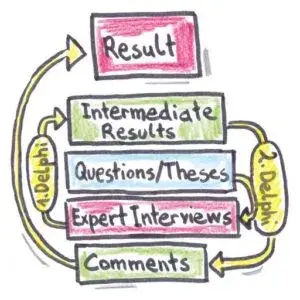
To explain Delphi forecasting, I have written a simple explanation of how it works:
A business sends multiple rounds of questionnaires related to its finances to a group of experts. After the first round of answers comes in, everyone gets a summary of what the others said.
This way, each expert can see the group’s thoughts and adjust their answers in the next round if they want. The goal is to go through a few rounds of this back-and-forth until the experts agree on predictions the business can use.
Delphi Financial Forecasting Example
A company sends a questionnaire to be filled out by experts. After everyone submits their answers, they all get a summary showing what the other experts think about the company’s financial future.
Seeing everyone else’s thoughts can help each expert think in new ways, so they fill out a new questionnaire with updated ideas. This process repeats, with each round bringing the experts a bit closer in their predictions. Finally, when most experts agree, the company uses this shared view to make its financial forecast.
Benefits of Delphi Forecasting
- More objective than conventional, in-house forecasting.
- Contributions are anonymous, so respondents can answer candidly.
Drawbacks of Delphi Forecasting
- Doesn’t allow for a productive, open dialogue like a face-to-face meeting would.
- Response times can be long or unpredictable, prolonging forecast delivery.
3. Statistical Forecasting
In my opinion, statistical forecasting is just a fancy way of saying “making predictions using numbers and data.” It’s simply a type of forecasting where I can look at data from the past — like sales numbers or other facts — and use it to guess what might happen in the future.
Statistical Financial Forecasting Example
Let’s say my company wants to know how much money it might make over the next few months. One way we could do this is by using the “moving average” method. My company would look at how much money it made each day over the last 100 days, then take the average of those numbers. (I talk more about moving averages in the section below.)
By using this average, my company can make a good guess about how much it might earn over a similar period coming up.
Benefits of Statistical Forecasting
- It rests on a more solid basis than other methods.
- It can be more straightforward than other methods — provided you have the right data.
Drawbacks of Statistical Forecasting
- Certain methods that fall under this umbrella can provide relatively estimates relative to other financial forecasting models.
- Companies without extensive historical data might not be able to produce reliable statistical forecasts.
4. Bottom-Up Financial Forecasting
Bottom-up financial forecasting is just the opposite of top-down forecasting. In this approach, a company starts by looking at the details of what’s happening with its customers or products and builds to a bigger picture of its future revenue.
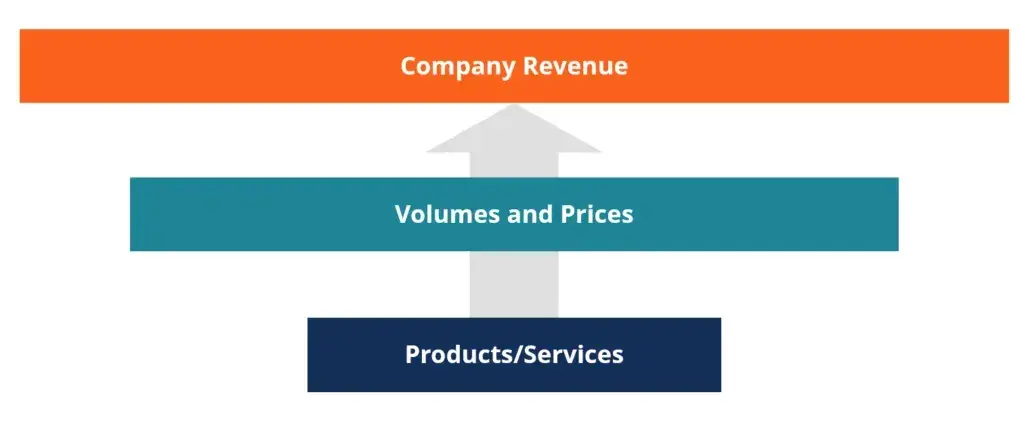
Again, I will quote Erik Lidman for his simple explanation of bottom-up financial forecasting. Bottom-up forecasts:
- Build forecasts from the ground up, project by project.
- Come from sales, marketing, and other frontline teams.
- Tend to be more conservative, based on realities on the ground.
Bottom-Up Financial Forecasting Example
Let’s say a company wants to predict how much money it might make next year. It would start by looking at how many products it sold last year and decide how much it plans to charge for each one this year. Then, by multiplying these two numbers, the company gets an estimate of its total sales.
Of course, real forecasting is a bit more complicated than that. A company would usually look at other details too, like how many customers they expect to have or how likely those customers are to stick around. This way, they get a more accurate prediction by building up from the ground level.
Benefits of Bottom-Up Forecasting
- The model allows for more detailed analysis than most others.
- It offers more room for input from various departments.
Drawbacks of Bottom-Up Forecasting
- Any errors made at the micro-level can be amplified to the macro-level with this model.
- A thorough bottom-up forecast can be time-consuming and labor-intensive.
5. Hierarchical Financial Forecasting
Put in simple terms, hierarchical financial forecasting is like creating a roadmap for predictions by organizing data into different levels or categories. Imagine it as a family tree for financial projections, where each branch represents a category, and smaller branches represent subcategories within it.
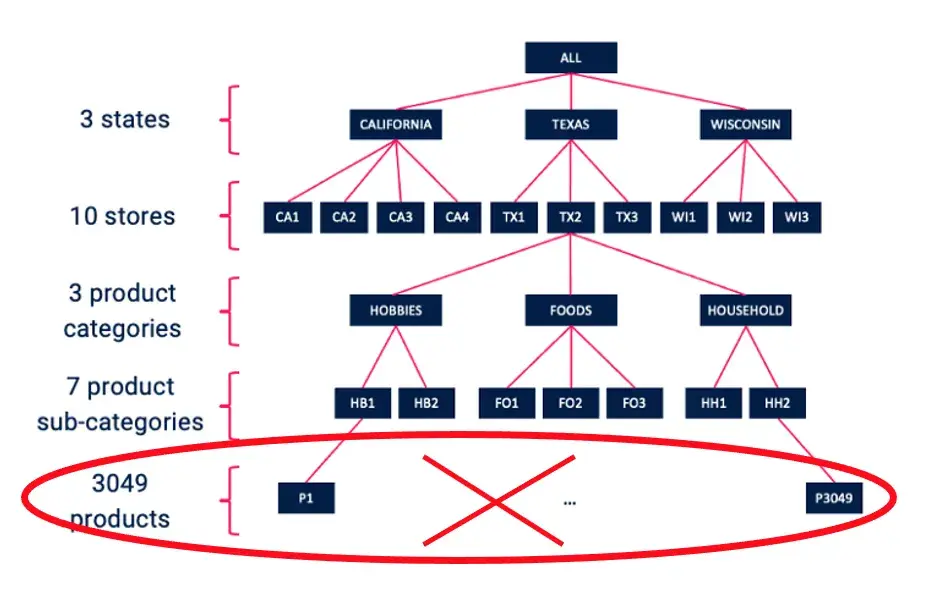
This method is useful because it combines both big-picture (top-down) and detail-focused (bottom-up) forecasting. By doing this, you get a more complete and accurate forecast, capturing trends at each level — overall and specific — making it easier to make smarter decisions, like what to stock up on or where to invest resources.
Hierarchical Financial Forecasting Example
For example, if you’re forecasting sales, you might start with a top category, like “clothing.” Then you break it down to “men’s wear” and “women’s wear.” You can go further, breaking “men’s wear” into “shirts,” “pants,” and “ties.” This lets you see not only the big picture (overall clothing sales) but also specific details (like how many black ties might sell within men’s wear).
Benefits of Hierarchical Forecasting
- Combines both the big-picture and detail-focused forecasting models.
- Provides a more complete and accurate forecast than other models.
Drawbacks of Hierarchical Forecasting
- This model can be complex since it requires lots of data.
- It can also be time-consuming.
Financial Forecasting Methods
1. Straight Line
Straight-line forecasting is one of the simplest ways a business can predict its future finances. It’s based on basic math and tends to give rough estimates, unlike some more complicated methods that provide more detailed projections.
In straight-line forecasting, a company looks at how much it has grown in the past and uses that information to predict future growth. It’s usually used when a business expects to see steady, consistent growth over time.
Let’s assume my business has been growing at a steady rate of 5% each year for the last four years. This way, I can use the same 5% growth rate to predict my revenue for the next few years. It’s a simple way to make projections based on past performance.
The straight line forecasting method does not take into consideration the fluctuations in the market and other factors that could impact growth, such as new competitors or shifts in the economy.
2. Simple Linear Regression
Simple linear regression is a way for businesses to make predictions by looking at how two things are connected.
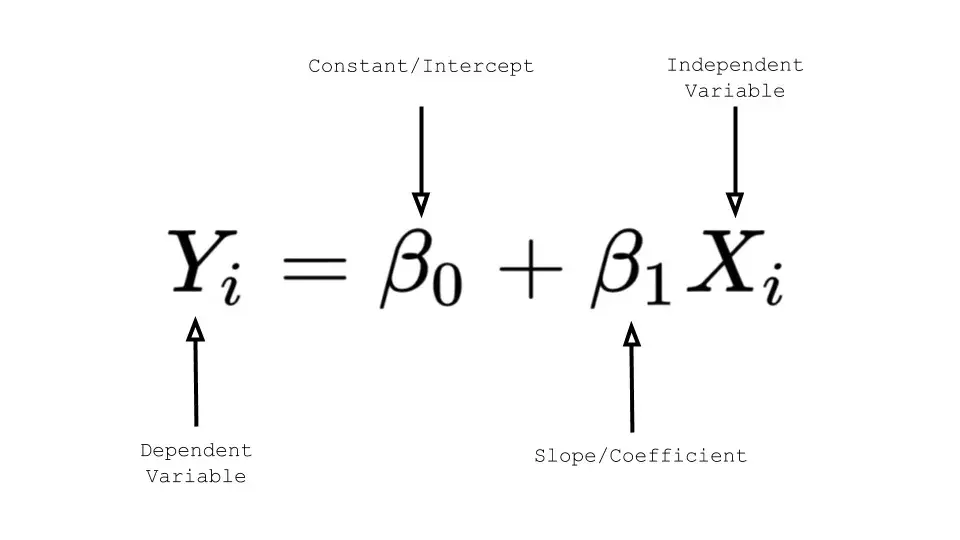
Imagine you have one thing you can control or measure, like the country’s GDP and another factor you want to predict, like how much money the company might make. By studying the relationship between these two, the business can make a good guess about future revenue.
So, if GDP goes up or down, the company can see how this change might affect its earnings.
If you wish to get a thorough step-by-step guide, I recommend reading this article on how to forecast sales using linear regression.
3. Multiple Linear Regression
Simple linear regression is a good way to make predictions, but it doesn’t always give us an accurate picture of financial performance because there are usually many things affecting the outcome, not just one factor.
This is where multiple linear regression comes in. As the name suggests, it looks at more than one factor to make a prediction.
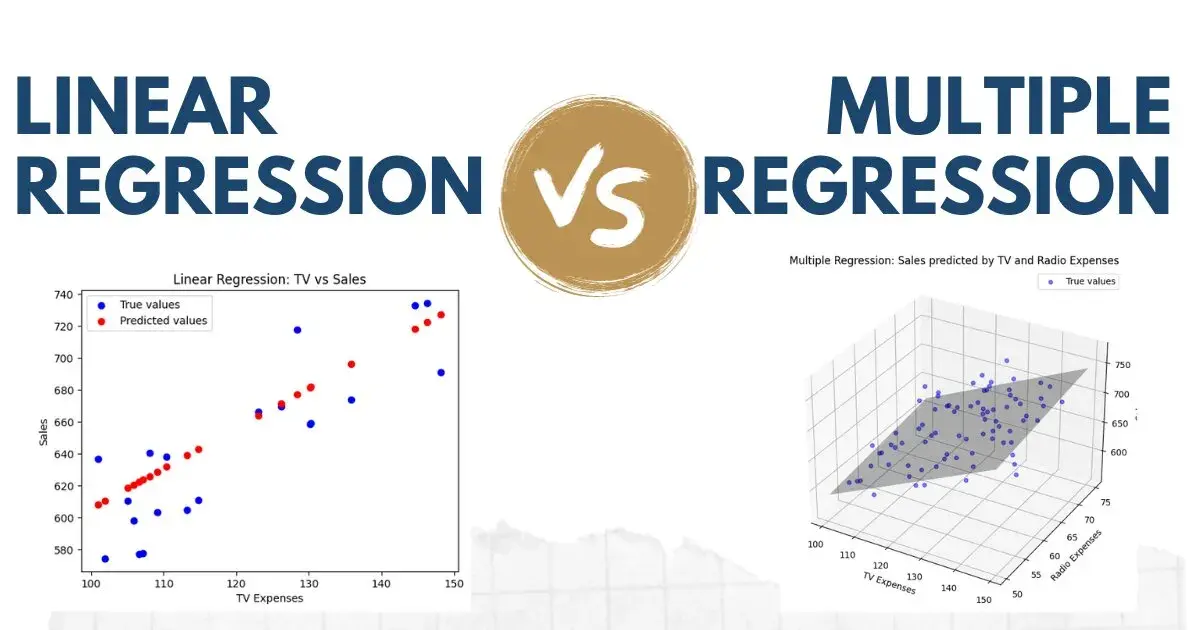
Instead of just focusing on how one thing — like the price of a product — might affect a company’s finances, multiple linear regression looks at two or more different factors at the same time to get a more accurate picture of what might happen.
4. Moving Average
Moving average forecasting is a method often used to track the direction of a stock’s performance, but businesses can also use it to predict their own financial results.
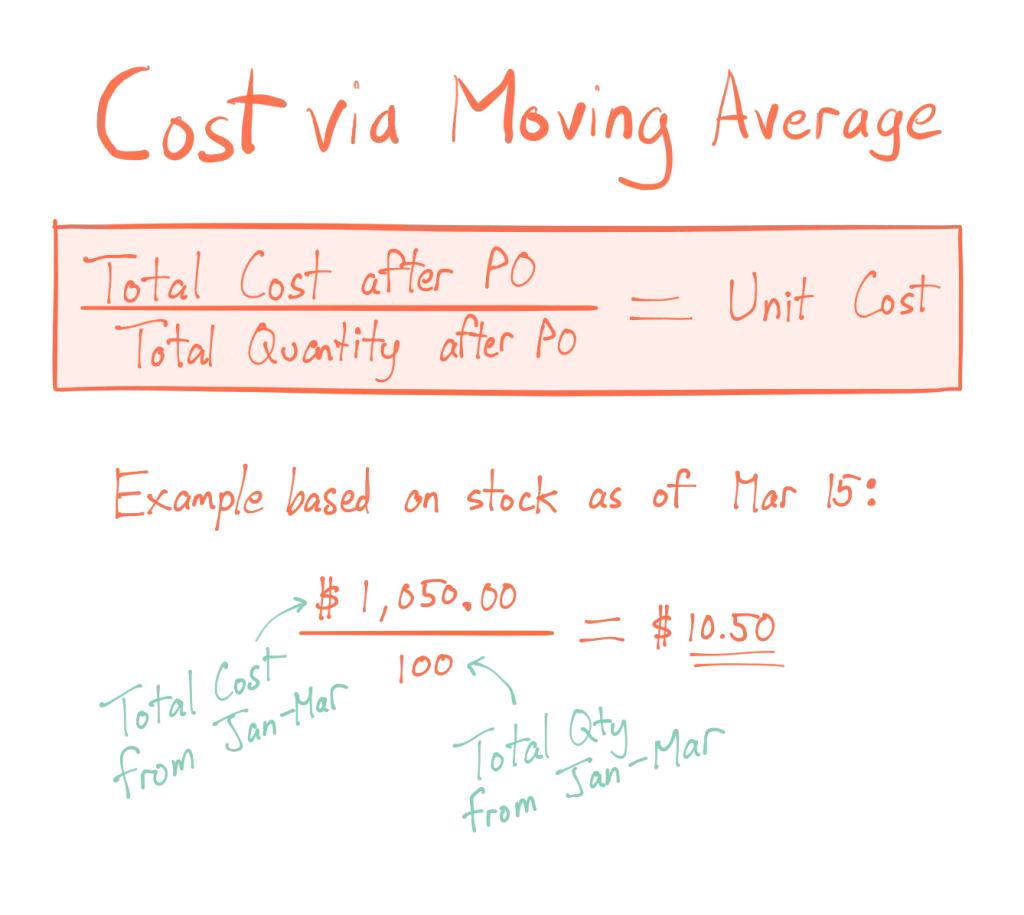
The idea is simple: I take the average of a set of numbers from the past, like sales or revenue, and use that average to estimate what might happen in the future.
I like what Nicolas Vandeput, a person who does demand and supply planning, writes about using moving averages:
“Don’t compare your forecasting accuracy to industry benchmarks. They’re irrelevant.
“Instead, compare your forecasting accuracy against simple statistical benchmarks such as moving averages. Moving averages are a fair benchmark: They will deliver higher (or lower) accuracy depending on the product, period, and market.
“That’s perfect. Also, they’re free.”
The moving average method works best for looking at short-term trends, like weekly, monthly, or quarterly changes, rather than long-term projections. It helps businesses see patterns and make educated guesses about what’s coming next.
How I Do Financial Forecasting

1. Define my purpose for using a financial forecast.
To get the most out of a financial forecast, I like to know why I’m using it in the first place. I start by asking myself questions such as:
- What am I hoping to learn and take away from its results?
- Am I trying to gauge the company budget?
- Am I trying to reach a certain goal or threshold for product sales?
Only when I have a clear intent behind my financial forecast will I be able to have a more concise and clear result to search for once I begin.
2. Gather historical data.
To track the progress of my financial forecast, I should have a good idea of my current and past finances. Here, I give myself time to analyze the historical financial data and records, including:
- Revenue and losses.
- Equity and liabilities.
- Fixed costs.
- Investments.
- Earnings per share.
My forecast will only be as accurate as the information I collect, so I try to get as much relevant data as possible for better results and understanding.
3. Set a time frame for my forecast.
I decide how far into the future I need the documentation for in order to evaluate a business’s financial performance. This can look like weeks, months, quarters, or even years of data collection.
It’s most common for a business to conduct a forecast over the course of a fiscal year, but it can be unique for every business.
4. Choose a forecasting method.
I choose from one of the four financial forecasting methods mentioned above. Before choosing one, I see if it aligns with my previously declared purpose and goals.
5. Monitor and analyze forecast results.
As the financial forecast delivers new data, it is time to monitor and analyze the data differently. Some different ways that data can be used are as follows:
- Identify potential issues. Monitoring and analyzing financial results can help a business identify potential issues before they become more significant problems.
For example, if expenses are higher than anticipated, a business can identify the cause and take corrective action to prevent it from negatively impacting financial performance.
- Measure progress towards goals. A financial forecast provides a business with financial goals and expectations.
Weighing financial results against these goals enables a business to measure its progress toward achieving them. This can help the business identify where it is falling short and adjust to get back on track.
- Manage cash flow. Monitoring and analyzing financial results can give a business insight into its cash flow situation.
By understanding how much cash is coming in and going out, a business can make smarter decisions about budgeting and spending.
And it doesn’t have to be a tedious task to analyze your financial data — thankfully, there are plenty of forecasting, decision-making, and financial-planning tools available for this purpose. Let’s go through some of my favorites. To give you an overall view of the software, I have also included comments from users who have actively used each of the software.
Financial Forecasting Software
1. Sage Intacct
Pricing: Contact for pricing
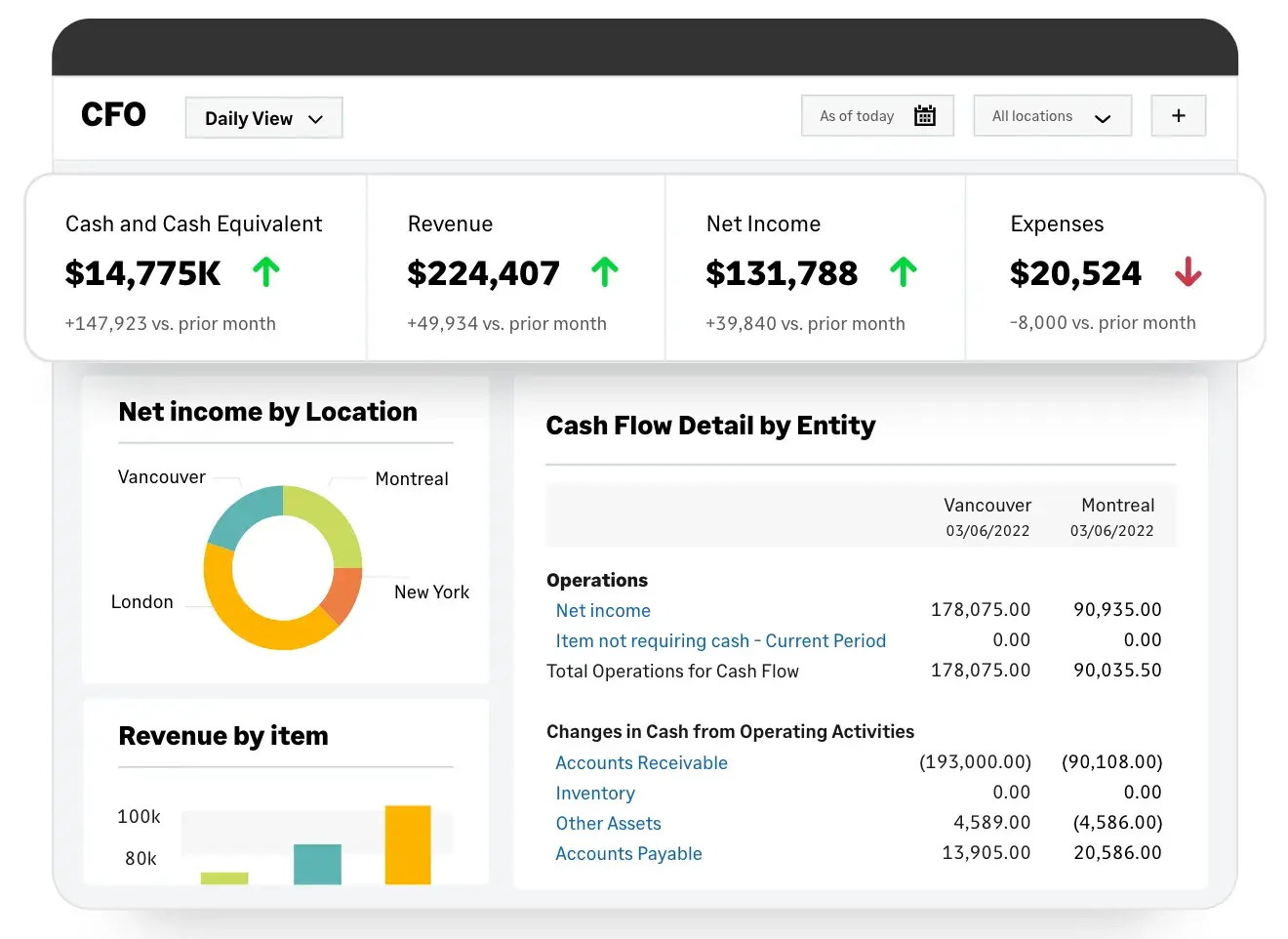
Best for: Collaboration
Sage Intacct is a multifaceted accounting and financial planning software with an accessible interface and a suite of features that can streamline your financial forecasting time by over 50%.
The platform’s automated forecasting resources effectively eliminate the stress, legwork, and room for error that often come with spreadsheet-based planning.
What I like: Sage Intacct separates itself from similar applications through its accessibility and room for collaboration. The software is particularly user-friendly and offers a singular, centralized solution for virtually any stakeholder within an organization to easily contribute to and make sense of financial projections.
Comments From Users
- “The automations in the AP module and in the General Ledger can save so much time and energy. I really appreciate the ease of import in general with Sage Intacct — and it goes for almost everything, JEs, Bills, Bank Transactions.” — Courtney D.
- “It is not easy to integrate with outside programs. You have to go through a complicated process anytime you want to integrate something into Sage Intacct.” — Stan F.
2. PlanGuru
Pricing: Plans start at $83/month.
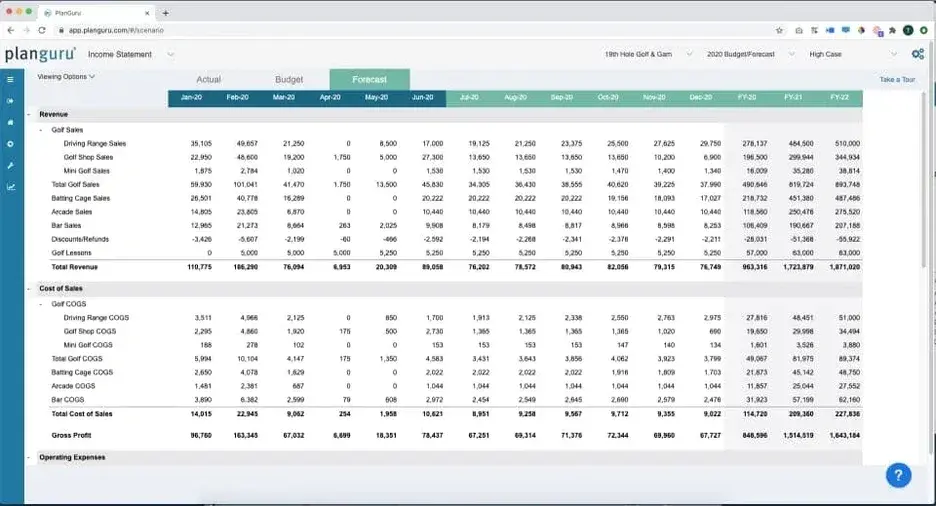
Best for: Pure financial forecasting
PlanGuru is a specialized financial forecasting tool that offers 20 different forecasting methods, allowing you to project financial outcomes for up to 10 years. What’s unique here is how easily you can bring non-financial data into your forecasts, which means you can consider factors beyond pure financials.
Plus, its scenario analysis feature gives you the power to explore the impact of potential events on your business. For most small and medium businesses, PlanGuru offers flexible pricing that makes it accessible. I suggest starting with the basic plan at $83 per month, then adding users as needed for an additional $25 per user.
What I like: Unlike some broader accounting platforms that include forecasting as just one of many features, PlanGuru is specifically built for financial projections.
It’s built to support strategic planning with its range of 20 forecasting methods and other features that help you look ahead. If you’re searching for a budget-friendly platform focused solely on financial forecasting, PlanGuru is worth a closer look.
Comments From Users
- “Unlike other softwares that have you speak with chatbots, Plan Guru has real people with a depth of knowledge that makes the integration of our financial data into the software a breeze.” — Verified User at G2
- “One of the best features is how quickly the software reacts to updates and changes and imports the data from our accounting software. Excel reporting can be a little tricky because of how precise it needs to be for the data to import.” — Jill S.
3. Workday Adaptive Planning
Pricing: Contact for pricing

Best for: A dynamic range of forecasting options
Workday Adaptive Planning offers a powerful blend of accessibility and functionality in financial forecasting, making it adaptable to a variety of business needs.
With its capability to integrate real-time financial and operational data, the software allows building and comparing different what-if scenarios that reflect accurate, effective projections.
It’s essentially a software that I can use to forecast over any timeframe, whether daily, monthly, quarterly, or long-term, ensuring flexibility no matter the planning timeframe.
What I like: One of the standout features of Workday Adaptive Planning is its support for both detailed bottom-up and top-down forecasts, which gives businesses of all sizes a tailored approach to financial projections.
Whether I’m creating forecasts based on executive targets or operational data from the ground up, this tool enables precise, impactful insights. If you’re looking for forecasting without compromising on accuracy, I recommend Workday Adaptive Planning as a tool well worth considering.
Comments From Users
- “The best part about the software is being able to trust the data.” — Kimberly F.
- “We have been able to quickly adopt and implement the solution, provide the flexibility for multiple scenario modeling and unify our global reporting. The lack of file structure through the menu bar makes navigating the models a little difficult” — Scott L.
4. Limelight
Pricing: Contact for pricing
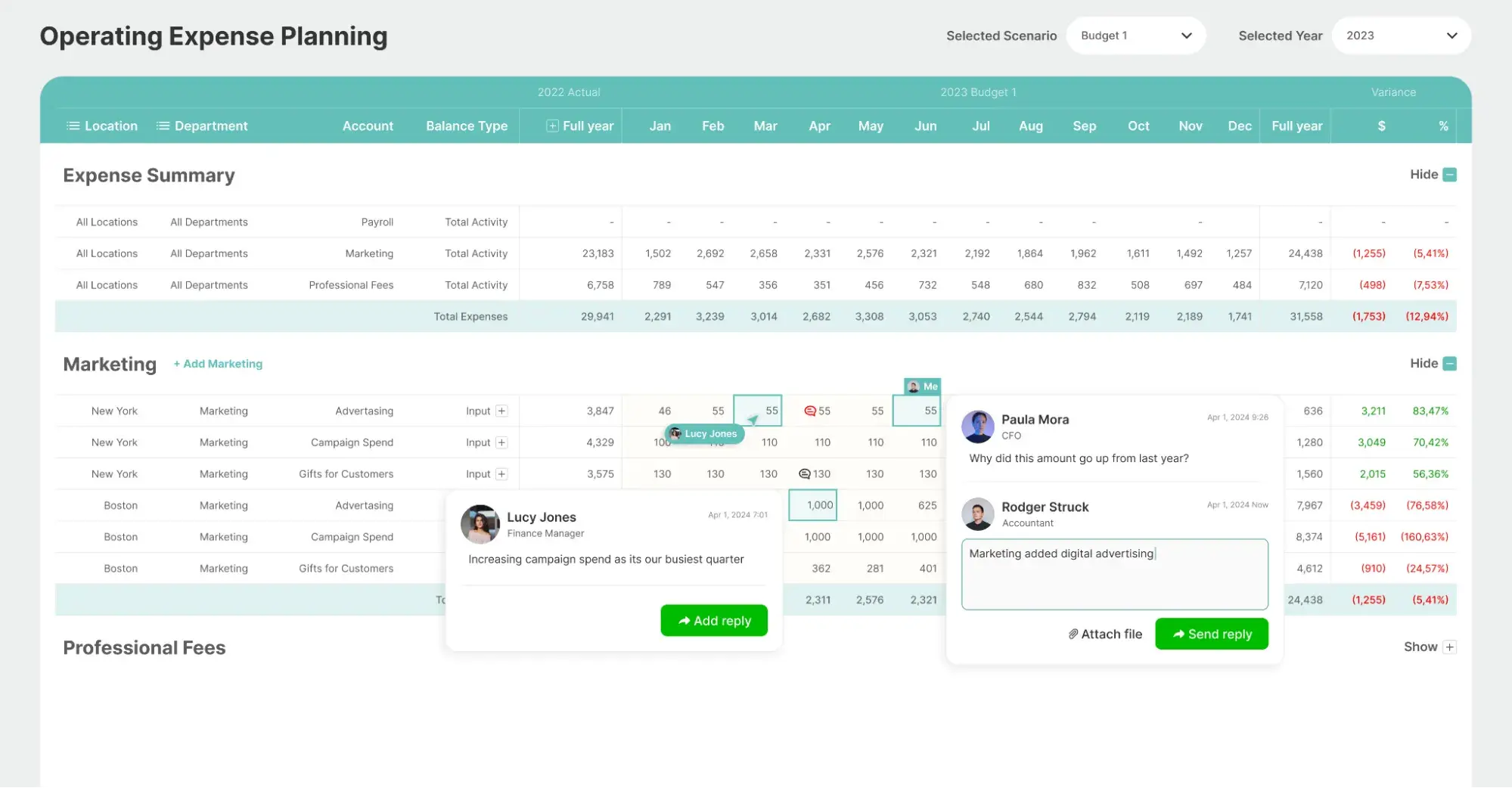
Best for: A familiar, Excel-like experience
Limelight is an integrated, web-based financial planning tool that provides businesses with a centralized solution for almost all of their forecasting needs. The software is designed with finance and accounting teams in mind. It provides powerful automation and seamless data integration to simplify the forecasting process, all while maintaining accuracy and quality.
What I like: If you’re like me and have spent a lot of time using Excel, you’ll appreciate how Limelight’s user experience is designed to mirror it.
This makes it especially easy for CFOs, controllers, budget managers, and other finance professionals to jump in and start using it without a steep learning curve.
If you’re looking for a forecasting tool that’s both powerful and user-friendly, I definitely recommend considering Limelight.
Comments From Users
- “The best part about the software is their customer service and care. All implementations come with challenges, staffing changes, scope hiccups, etc. The client team at LL were proactive, engaged with our project manager what felt like daily, and the project felt on track the entire time.” — Jason W.
Which financial forecasting model should you run?
Financial forecasting is absolutely crucial for effective financial planning, and I can’t stress that enough. Without a clear understanding of what lies ahead, it becomes incredibly difficult to navigate challenges, set realistic goals, or even pinpoint areas of your business that require special attention.
But what financial forecasting model is the best one for you to run?
Top-down and bottom-up approaches are two of the most common models. The major drawback is that the top-down approach does not account for local factors that influence demand. On the other hand, bottom-up approaches are prone to propagating errors.
Delphi forecasting is a safe option if time constraints and going back and forth aren’t too much of a concern. In my opinion, the best financial forecasting model (that also incorporates statistical forecasting) is hierarchical forecasting. I find that its thorough approach to data collection and analysis produces reliable and accurate forecasts you can rely on.
After reviewing all the models, methods, and software above, I hope you’re able to find the right solution for your business needs and goals.
Editor's note: This article was originally published in June 2022 and has been updated for comprehensiveness.
Sales Forecasting
.png?width=112&height=112&name=Image%20Hackathon%20%E2%80%93%20Horizontal%20(59).png)
-Feb-24-2025-07-49-23-4986-PM.png)
.png)
.webp)
![How to Choose the Right Forecasting Technique [+ Expert Insight and Data]](https://53.fs1.hubspotusercontent-na1.net/hubfs/53/forecasting-methods-1-20241205-4072635.webp)







![I Took a Deep Dive Into Trend Forecasting: Here’s What I Learned [+ Expert Tips]](https://53.fs1.hubspotusercontent-na1.net/hubfs/53/trend-forecasting-1-20241114-1048511.webp)
